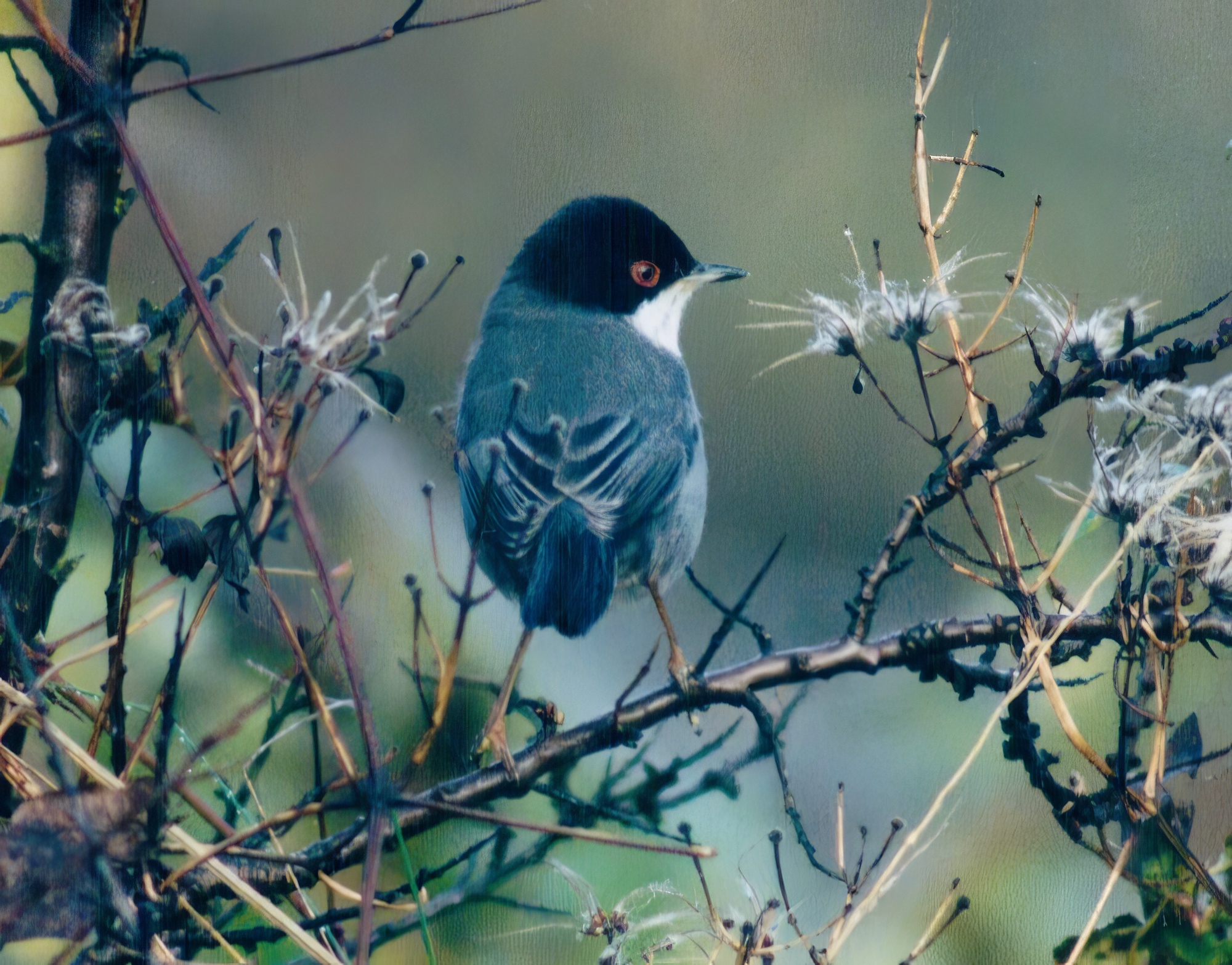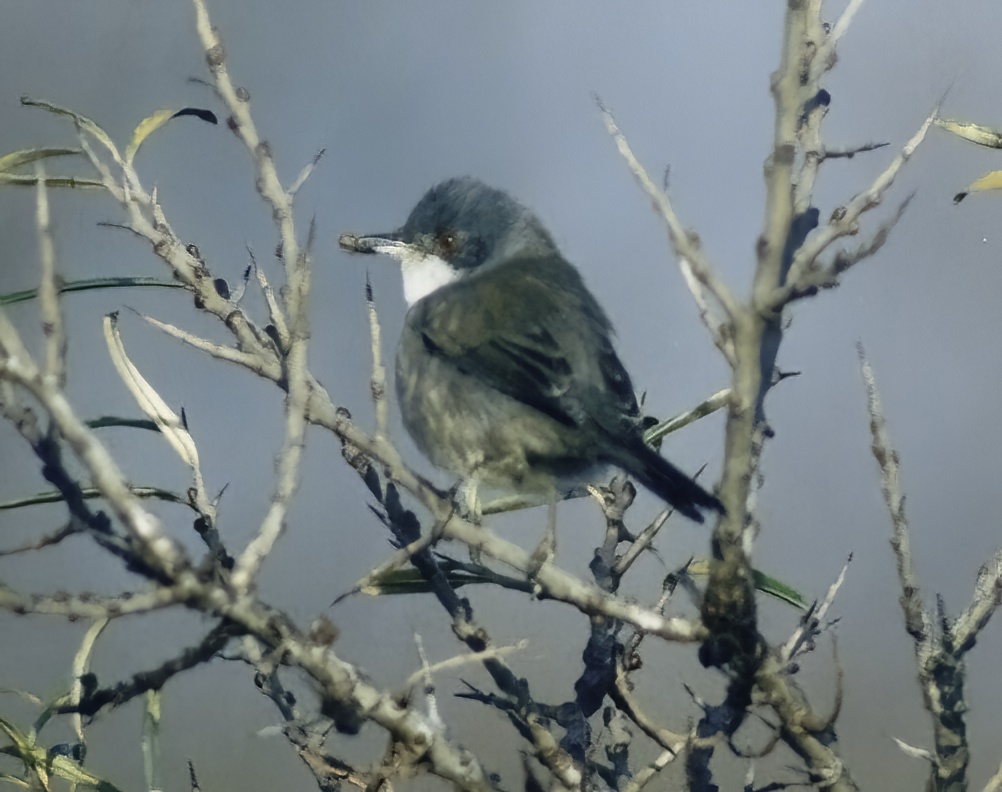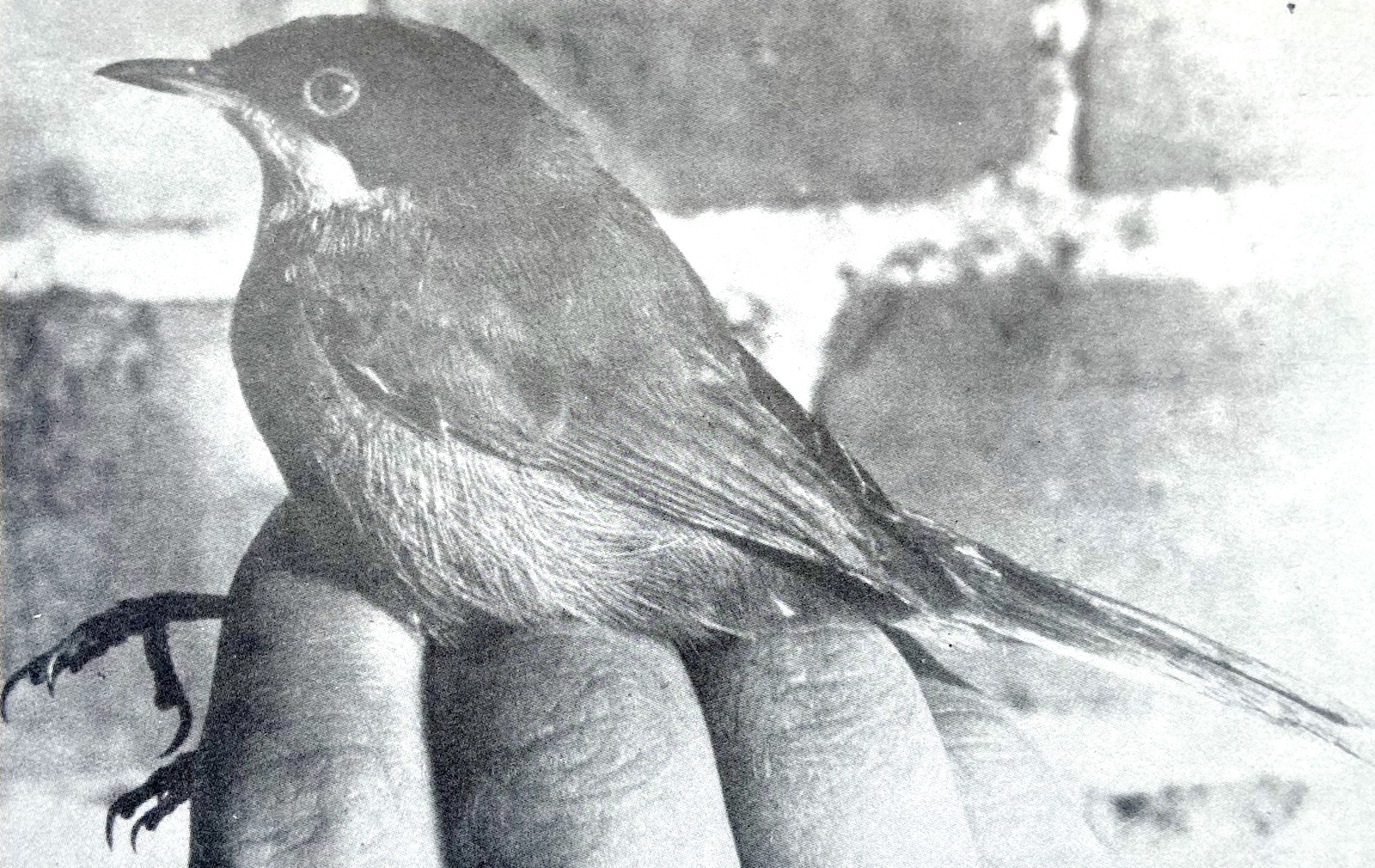Sardinian Warbler Curruca melanocephala
Vagrant. South-western Europe.


Male and female Sardinian Warblers Skegness October 2003-January 2004 (John Harriman)
An adult male of this attractive Mediterranean species was trapped in June 1979 at Gibraltar Point NNR and summered there, being retrapped on July 28th and September 6th. It was in heavy primary moult when retrapped in July but was seen by several other observers, singing occasionally into September, last seen there September 15th. The second record wasn’t until July 1986 at the same site and again a long stayer, present for more than eight weeks. The third and fourth records sprang a bit of a surprise as first an adult male was discovered in Sea Buckthorn, Hippophae rhamnoides, on the coastal strip at Skegness present October 2003 and was joined by a female in November 2003 nearby raising the possibility they may have summered. The female was last seen in December 2003, but the male remained to January 2004. Given their choice of habitat and skulking behaviour they may easily have gone undetected somewhere along the coast further north.
An adult male trapped on Lundy Island in May 1955 was the first of 81 British records. Sixty percent of records have been in the 1980s and 1990s, but since then the trend has been downwards with just 25 British records 2000-2018, still a genuine rarity.
| Site | First date | Last date | Count | Notes |
| Gibraltar Point NNR | 30/06/1979 | 15/09/1979 | 1 | Male, trapped; in heavy primary moult July 28th; heard in song several times in September. |
| Gibraltar Point NNR | 06/07/1986 | 31/08/1986 | 1 | Adult male, trapped; retrapped August 24th. |
| Skegness | 02/10/2003 | 11/01/2004 | 1 | Male |
| Skegness | 10/11/2003 | 01/12/2003 | 1 | Female |
Finder’s report: Sardinian Warbler at Gibraltar Point NNR, June 30th, 1979: first county record.
by R. Lambert (June 30th) and F. Ball (September 13th)
Note: this account is based on the two original BBRC submissions by R. Lambert and F. Ball. The RC report for 1979 summed up this bird’s long residency: “A long stay by this scrub-loving warbler at a locality that has so much scrub that non-ringers may be forgiven for tearing their hair out in frustration”. This was Britain’s 7th record ever, the first being an adult male trapped on Lundy Island in 1955.
Circumstances
June 30th, 1979 – the bird was seen for the first time when it was caught at 06.00 hr. It was identified as soon as it was seen in the mist-net. It had not been seen prior to this but was later seen by at least one other observer some half a mile from the point at which it was released.
September 13th, 1979 – the bird was first seen at 09.30 hr. and watched with binoculars down to 10 yd. for 15-30 minutes. Lesser Whitethroat, Goldfinch and Linnet were in close proximity. Cloud cover 6/8, W wind force 3, bright sunshine behind me (FB) with good visibility. I saw the bird among a number bathing in shallow pebbly water; it later flew up into an adjacent sparsely-leaved Elder bush where I had a good view. I watched until it flew off over open space into thick bushes.
Description
June 30th, 1979
Most noticeable feature was the glossy black cap extending well below the eye and on to the nape. The white chin and throat contrasted sharply with the cap. Bright pinkish-red eye ring. Mantle dark grey with slight brown tinge (cf. Lesser Whitethroat); wing feathers grey-brown with slightly paler edges; flanks, breast, and belly whitish with greyish wash; tail dark grey on outer three feathers; bill dark, legs brown.
It was in heavy primary moult when retrapped on July 28th and September 6th. The bird was aged and sexed as an adult male.
September 13th, 1979
Warbler-type bird, grey back, and lighter grey flanks, white on outer tail feathers. Intense black on head coming well below eye level (could not have been a Blackcap). Appeared to be marginally longer than a Lesser Whitethroat also present. Red eye ring.
Biometrics
Wing length – 62 mm.; 1st primary = p.c. +4 mm; 2nd = 7/8.

Digitised photograph of the 1979 Sardinian Warbler taken from the 1979 Lincolnshire Bird Report, original not available (R. Lambert)
(Updated with reference to the new Birds of Lincolnshire (2021) November 2022)

